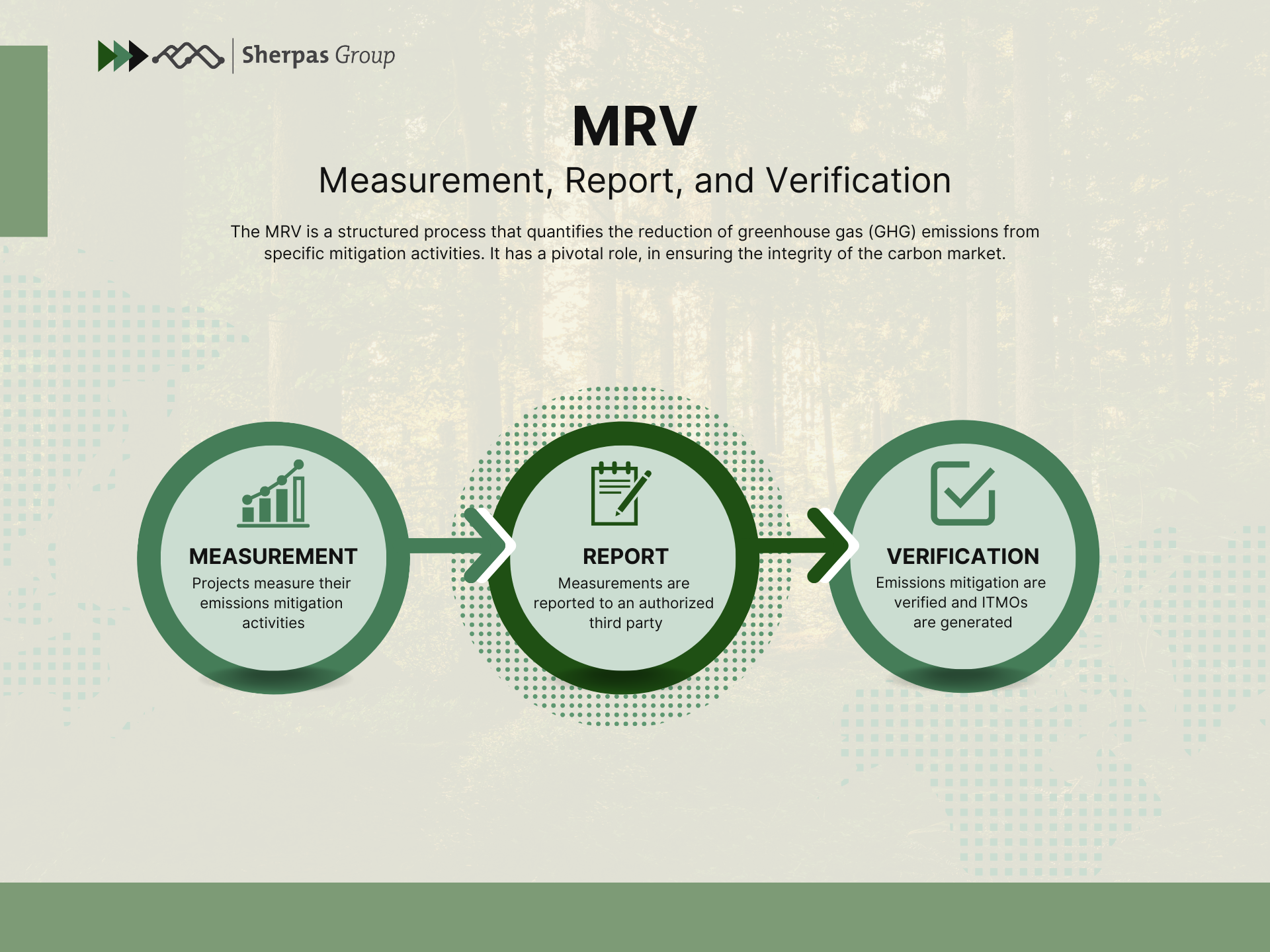Why Every Climate Stakeholder Needs to Understand MRV 🔍
Measurement, Reporting, and Verification (MRV) is a structured, multi-faceted process that quantifies the reduction of greenhouse gas (GHG) emissions from specific mitigation activities. These quantified outcomes are then reported to an accredited third party for stringent verification. It is crucial to recognize that MRV is not merely a procedural requirement but the bedrock upon which carbon credit systems are built. It is indispensable for effectively operationalizing Article 6 of the Paris Agreement.
The utility of MRV is manifold. It translates climate action commitments into quantifiable, verifiable outcomes. This is not a trivial exercise; it is the key that unlocks the issuance of carbon credits. These credits have a dual utility: they can be traded on international carbon markets or used to meet a country's Nationally Determined Contributions (NDCs) under the Paris Agreement. In a nutshell, MRV is the conduit for mobilizing climate finance and demonstrating measurable progress in climate goals.
Article 6 of the Paris Agreement provides the architecture for a global carbon market. Within this structure, MRV assumes a pivotal role. It is the mechanism through which carbon credits are generated, enabling their trading or utilization for compliance. Without a robust MRV system, the integrity of the carbon market stands at risk, potentially undermining global efforts to mitigate climate change.
As the world grapples with the intricacies of climate action, it is incumbent upon all stakeholders—be they policymakers, corporate leaders, or the general populace—to understand the critical role of MRV. It is not a mere technicality but a vital enabler that assures the credibility and effectiveness of global initiatives to combat climate change.


